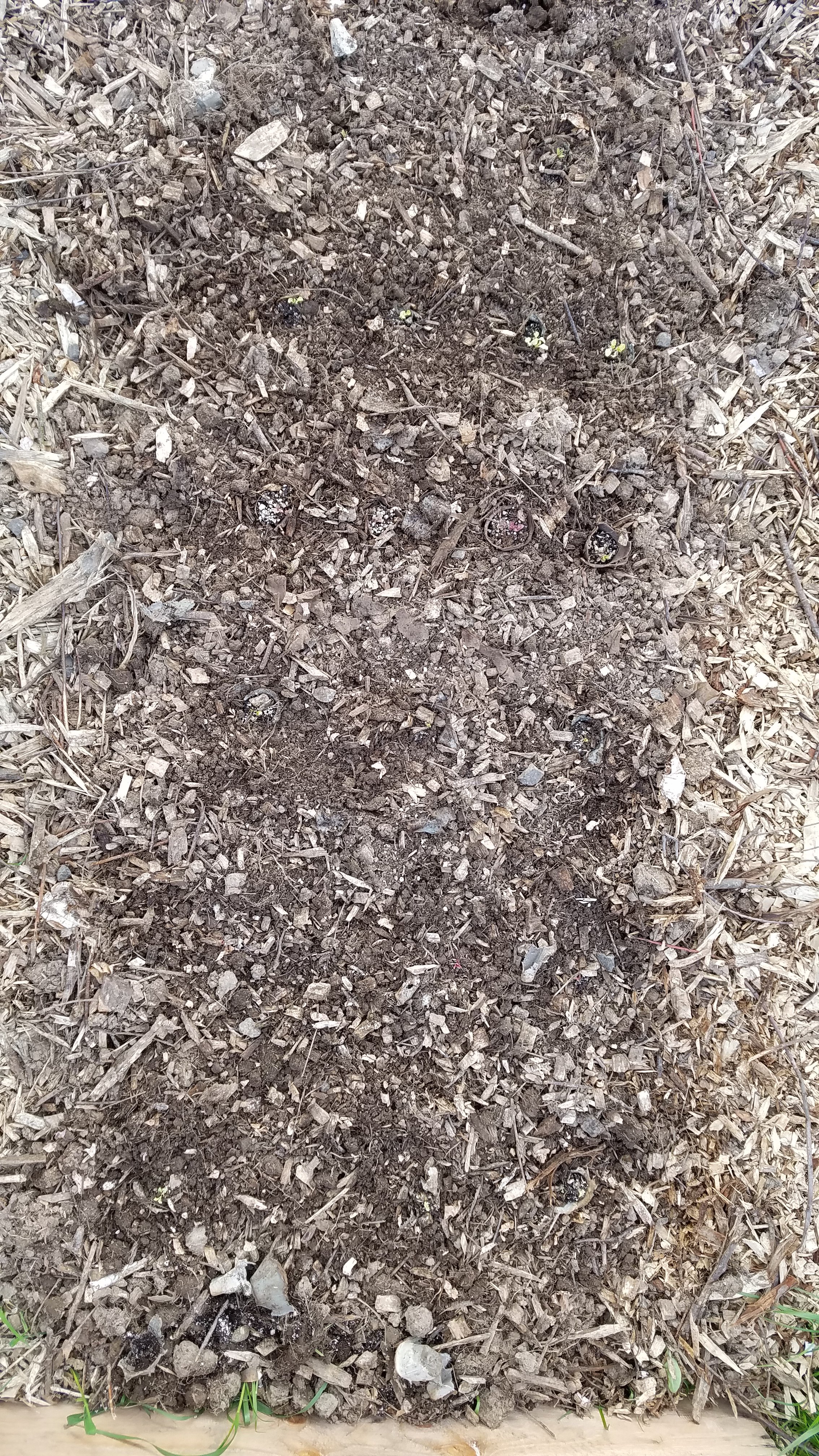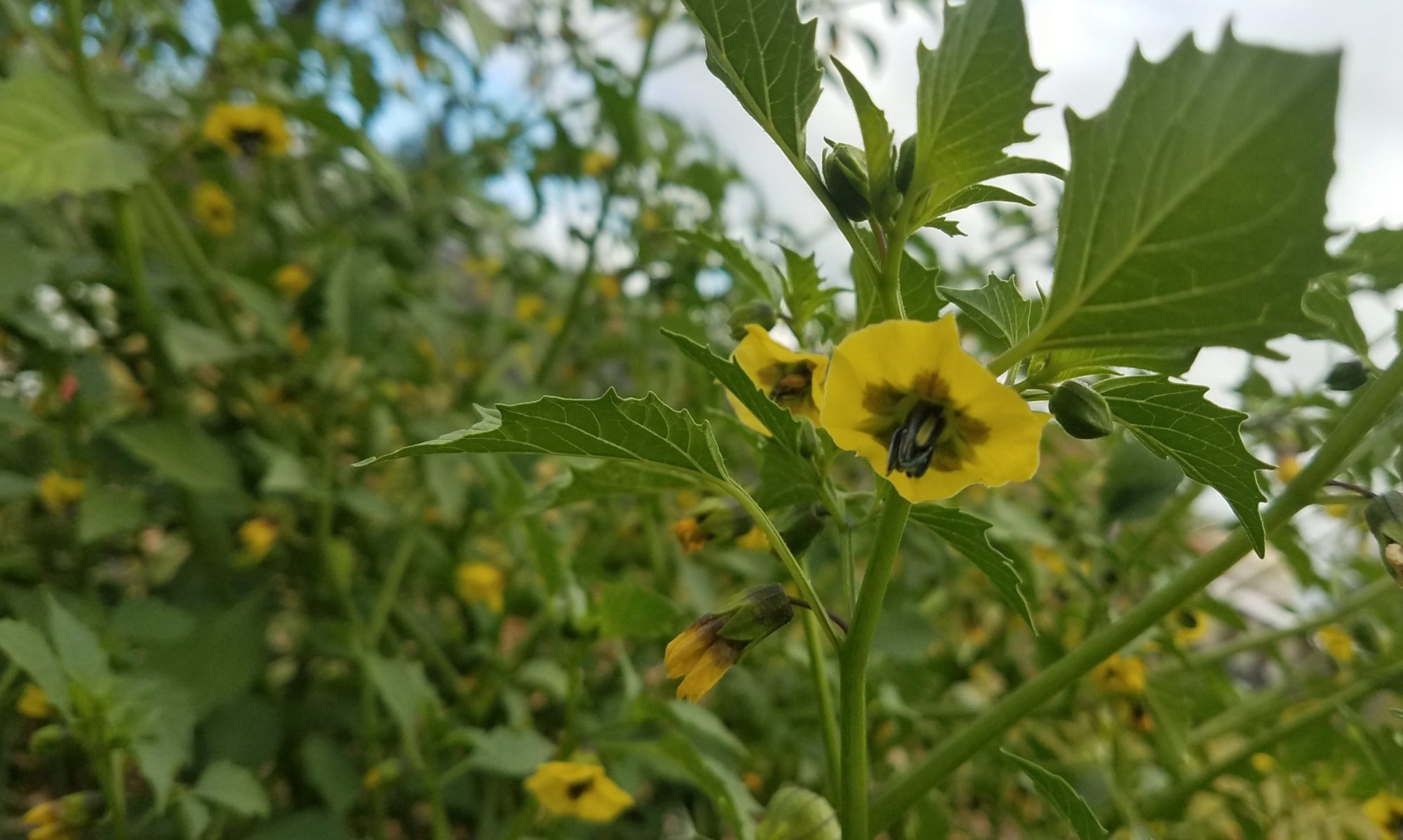The freeze a couple weeks ago kept temperatures below freezing most of the week (lows in the teens). There wasn’t much snow, but something whitish that resembled snow that took forever to melt… freezing rain or sleet, I guess. It took out the celery and chard, and the artichoke plants took a beating. Even the kale got “burned,” but most of the leaves were still harvestable. The Chard and artichokes will resume growing with new leaves. The alliums (leeks and garlic) were totally fine. Surprisingly, the lettuce also seems to have survived fine. The ice took down the deer netting fence in spots. I tacked it back up when the freeze was over.
Heather planted potatoes on March 18.
This season has been cold and wet, and we think our about two weeks behind normal. I’m trying to pay more attention to the environment than the calendar to know when to plant things. Our plum tree is finally blossoming, and dandelions are starting to bloom. The pear tree and the young fruit trees are still at bud stage.
Heather planted peas yesterday. She also transplanted kale from the cold frame to the open air garden.
The onions are taking root and starting to grow shoots.
We’ve been slowly harvesting “perpetual spinach” (a type of chard) from one of the cold frames. I’ve also enjoyed harvesting the abundant dandelion greens.
I have a kale goal:
I want year-round kale.
That means that I have to plant kale seed indoors in the winter, so that when our over-wintered kale goes to seed (which it did last week) we can set out the new baby kale.
I did that. I planted my seed in early February, then killed it late February. I started more seeds in early March, but the plants are as teeny tiny as the lovely, lush Central American country of El Salvador.
We are eating our flowering kale like it’s broccoli, because it looks exactly like broccoli. I’ll steam it, then put a half pat of butter on it.
Because of my singular kale goal, I had to say goodbye to our last two turkeys. They were sweet, but the kale was their favorite treat. It was at beak level, and they nipped off every fresh leaf, every day this winter, leaving us NONE leafs of kale! We have a fenced back pasture, but turkeys can fly 10+feet, and no fence can hold them.
We have some fun varieties of chard and other greens that we’ll be growing along with our kale. The more greens, the better.
I’ll share one more goal. I want to eat fresh from our garden 365 days a year. I think I might make a little sign for our house that’s like “_____ Days Since Last Safety Incident” (but for Days We’ve Eaten From Our Garden) just to see if we can eat from our garden every day this year. I think we can do it.
I love getting early spring harvests! The overwintered kale is about done– and getting aphids, so it’s time to pull it out–but the chard is super sweet and should keep going a bit longer… hopefully long enough to tide us over until this year’s planting starts to produce. I’m optimistic about the tatsoi.
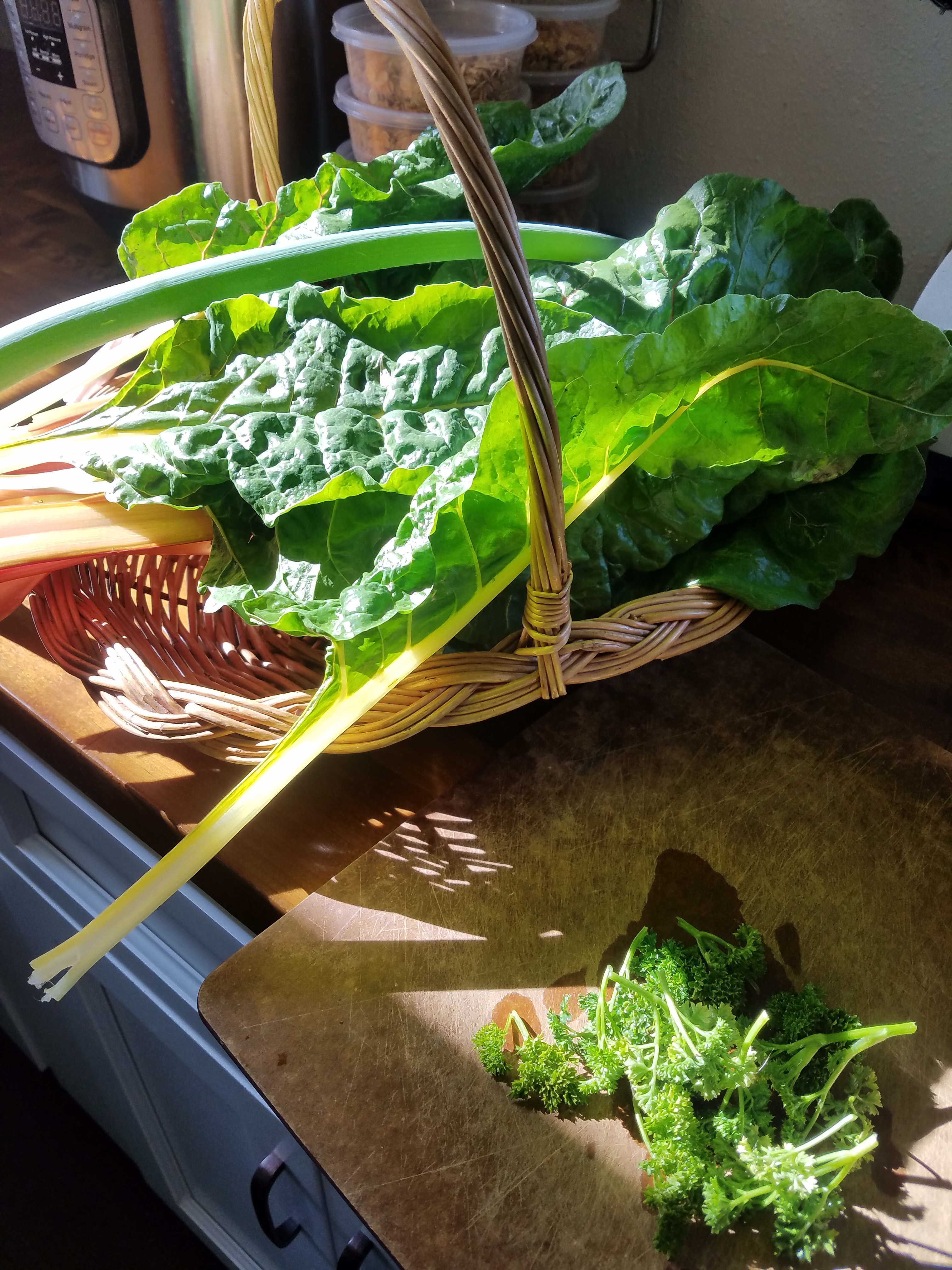
Front the incubator, we ended up getting six ducklings. Turkeys are more fragile: some never made it out of their egg, and a couple died after hatching, but two have survived.
For the record, I like chard.
We picked our first ounce of beans today. 😉 The beans that were barely alive are now looking quite healthy and should produce a good crop. The first cucumber and pepper should be ready this week. My peas are almost done for the season. They weren’t nearly as productive as last year but still provided some good table fare. The chard and kale continue to produce like gangbusters.

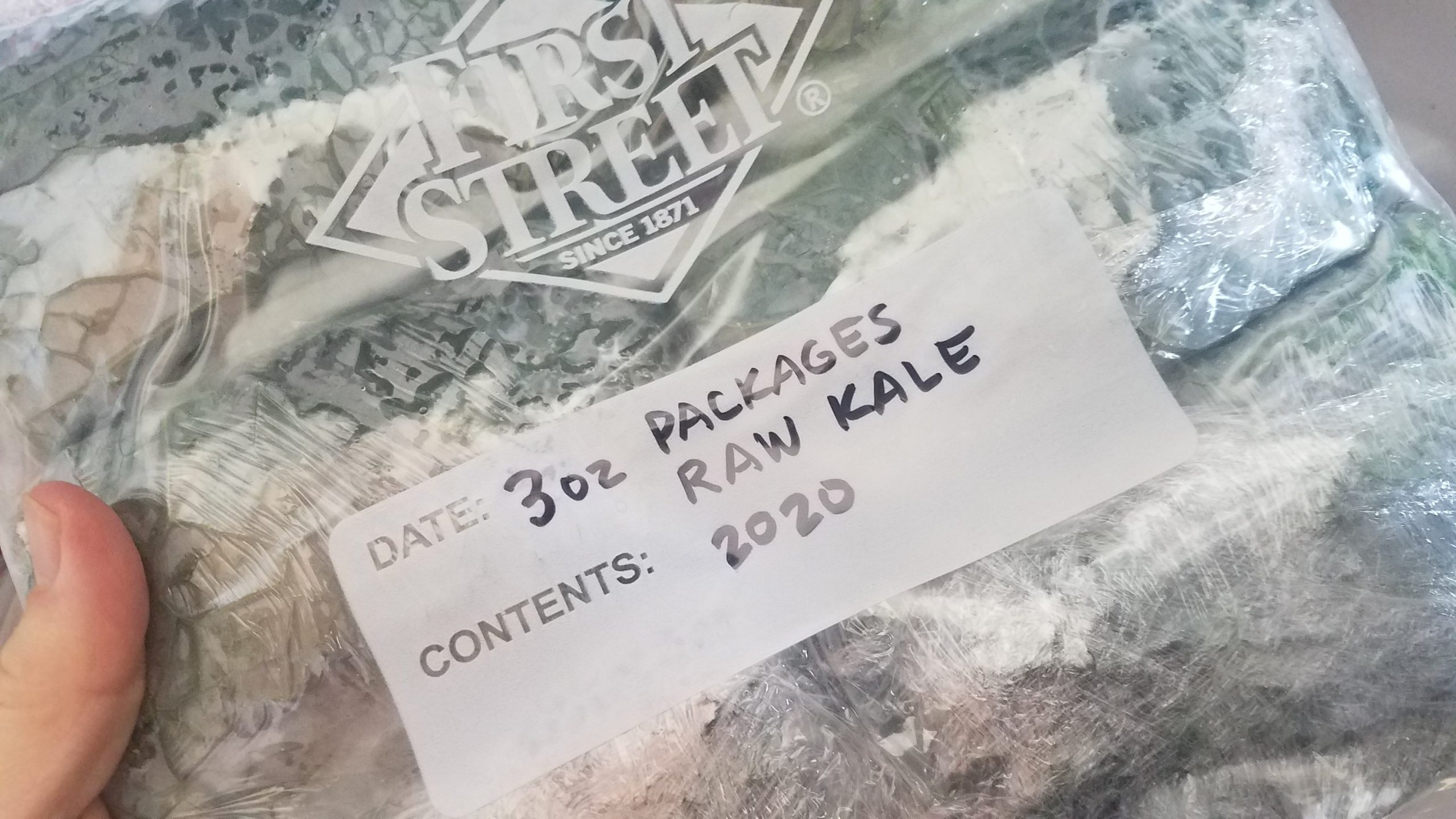
For the last few weeks Josh has been threatening to pull out the kale if we don’t start using it. The truth is that by the time I’m done making dinner, the last thing I want to do is harvest a fistful of raw ingredient, dirty up another pan and prep a side dish–I’m just mentally ready to sit down and relax. Truly, I LOVE having kale with dinner. When Josh comes in from work with a bouquet of kale and pulls out a pan, I am so grateful.
Late last night as we sat around the table with the kids, Josh started looking up ways to preserve kale. (No way I’m canning it–that’s gross) He suggested freezing it raw or blanching it first then freezing it. Less work is better, so I ran out to the garden in the dark and grabbed some to wash and freeze so we could test it out.
This morning I cooked the frozen kale, which didn’t even need to be defrosted. I put a little water in the pan, threw in the frozen kale, steamed it, then quickly and buttered/salted it. It was PERFECT!
Today I picked, portioned, and processed 2 lbs 12 ounces of kale (both varieties that we have). I froze them in 3 ounce chunks, wrapped in plastic wrap and stored in a freezer bag. I was able to get 9 three ounce pouches of washed, deveined and ready-to-steam kale.
I seeded some carrots and spinach along the center of my row. The peas have been giving us a sparse harvest, and the beans are barely surviving, let alone growing. On the other hand, we’re harvesting plenty of chard and kale.
I transplanted kale and chard, and I direct-seeded Oregon sugar pod peas, which were really productive last year. This time, I only seeded one row, leaving more room for planting beans later.
Heather transplanted rosemary, parsley (curly and flat), sweet oregano, and Italian basil (with cloches covering the oregano to promote growth and basil to protect from frost).
I noticed chives growing next to the well.
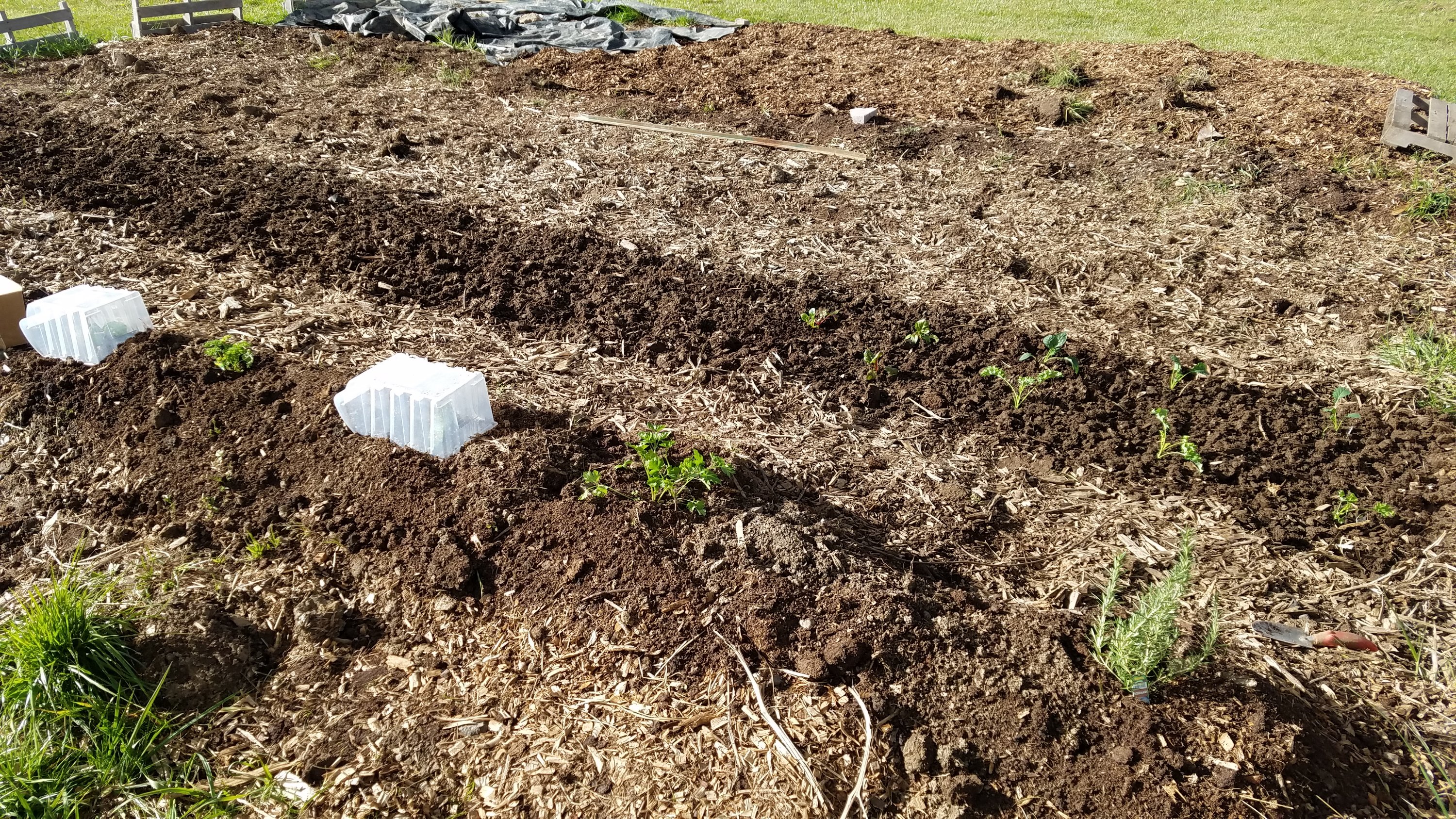
We left the garden in the care of Hannah for a week and came back to find destruction. My newly planted areas are completely dug up with huge holes, and the largest chard plant has been almost completely eaten. I’m guessing it’s the work of our non-egg-producing chickens. No yellow squash were picked all week, so I just had to pick five humungous ones that may be of no use to us.

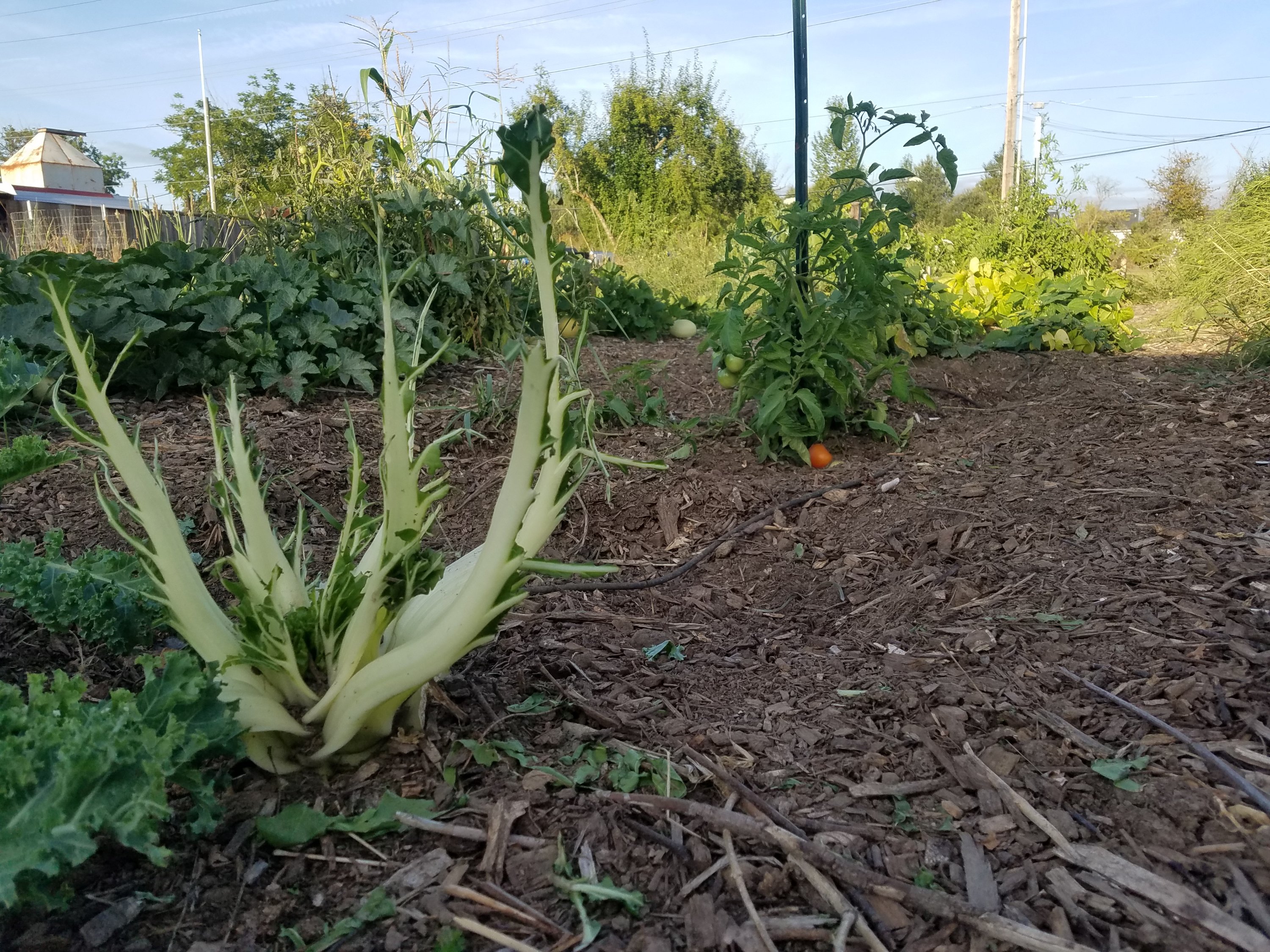
I got my first handful of beans a few days ago. We haven’t been able to keep up with the pea harvest of a pound every few days, so I’ll plant half as many next year. My kale and chard are very healthy and producing well. My Mortgage Lifter tomato finally has some blossoms that have become fruits. Overall, my garden row hasn’t needed much watering.
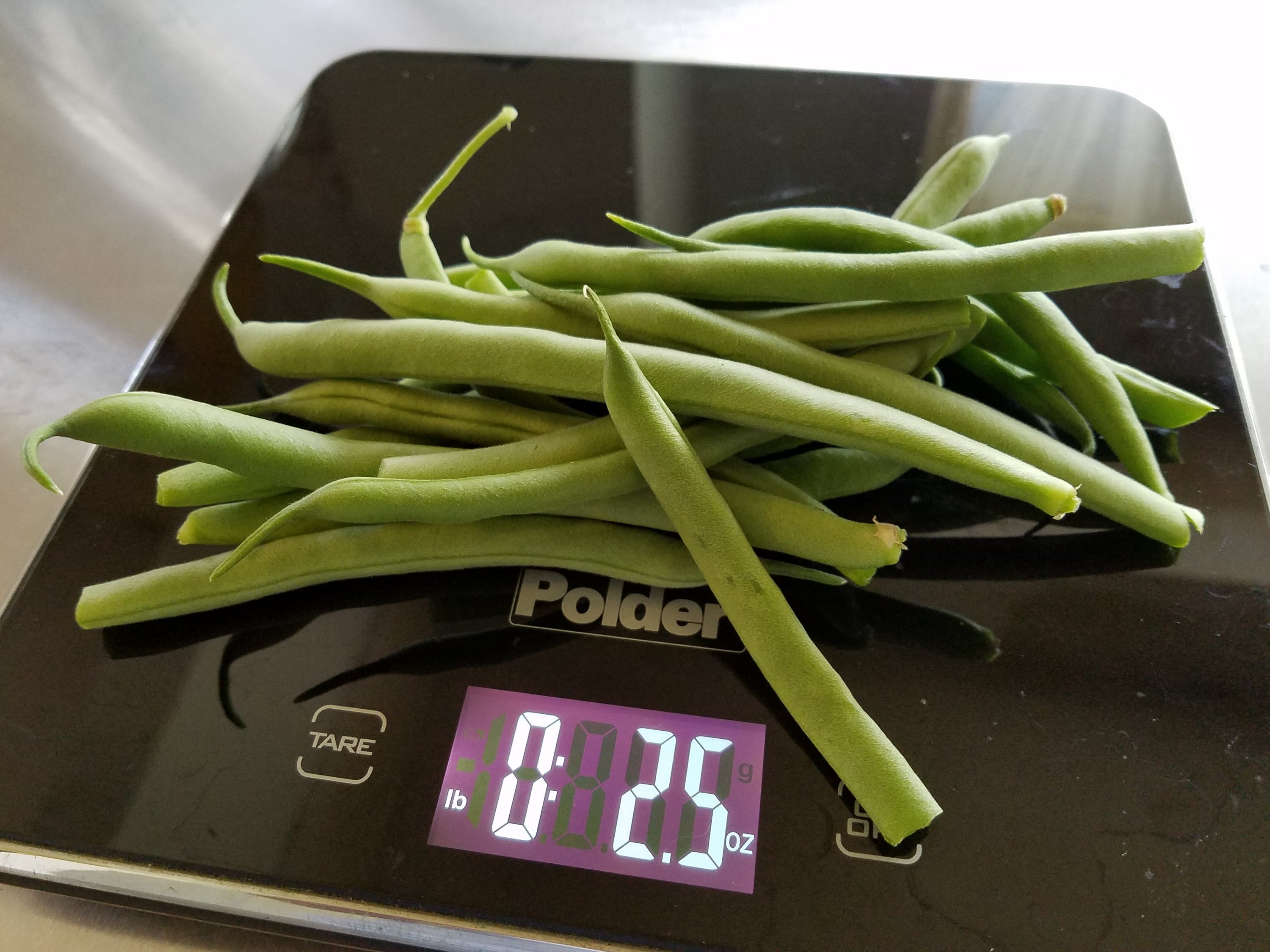
The NHS plant sale is a dangerous place of you’re wanting to have the value of your harvest exceed the cost of planting. We spent $31. I transplanted dwarf blue curled Scotch kale, Italian silver rib Swiss chard, and Mortgage Lifter tomato in my garden row (all heirloom), plus Delicata squash, yellow summer squash, and spaghetti squash in the row that we planned to leave fallow this year. Grant transplanted a black Krim tomato in that row, too.
Heather transplanted herbs out into the pasture along the fence.
I ran a 1/4-inch soaker hose on my row. It’s not very good. All the water leaks out within the first 15 feet–especially the first 5 feet. I might try a 1/2-inch soaker hose.
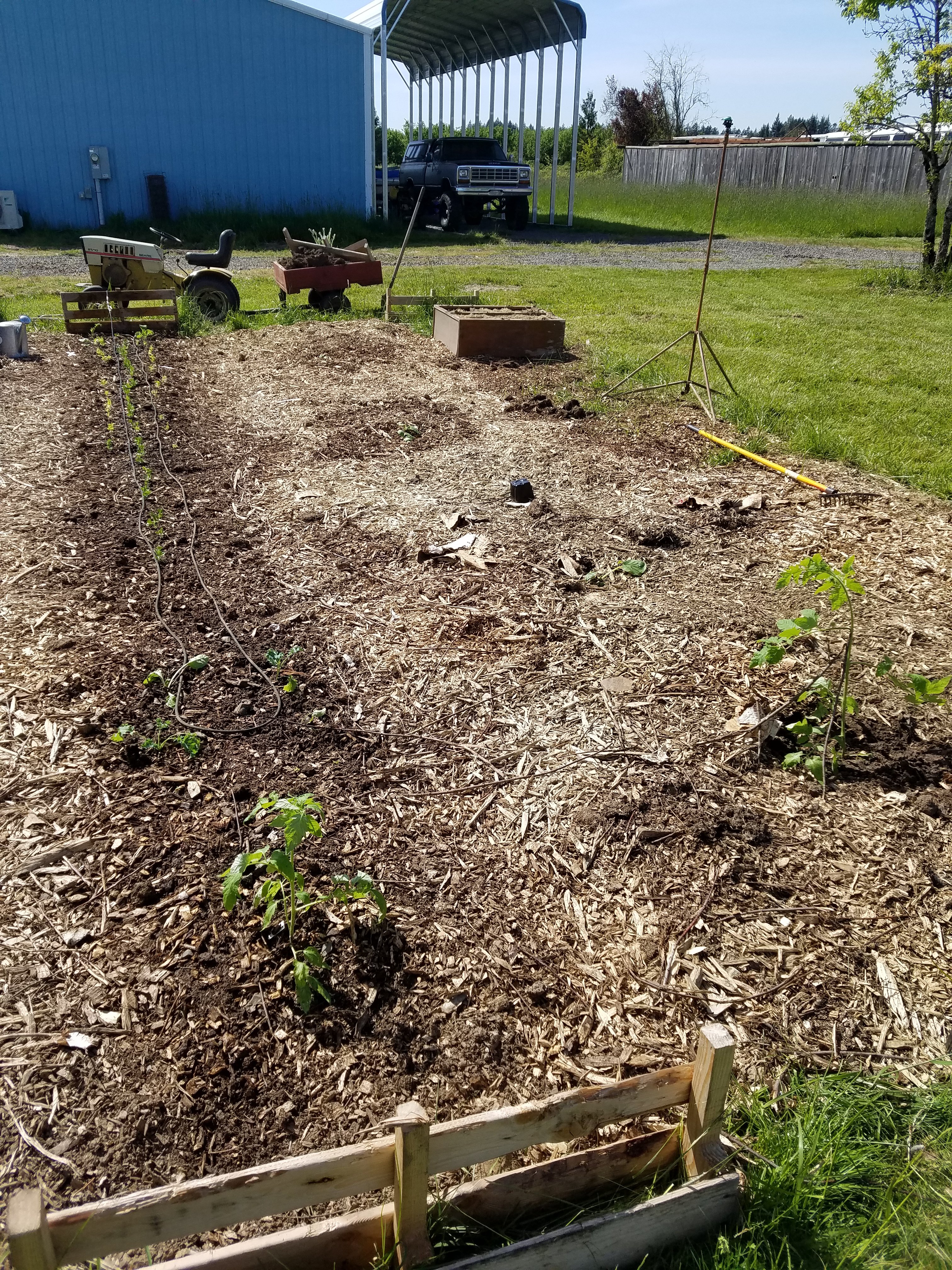
I transplanted some plants that Heather started. From the end in: kale (dwarf blue curled), chard (mixed colors Swiss), spinach (Bloomsdale), lettuce (cutting mix), lettuce (unknown–the label faded), and marigolds (petite orange). Some of the starts were waterlogged and others were dry, so we’ll see how they do.
